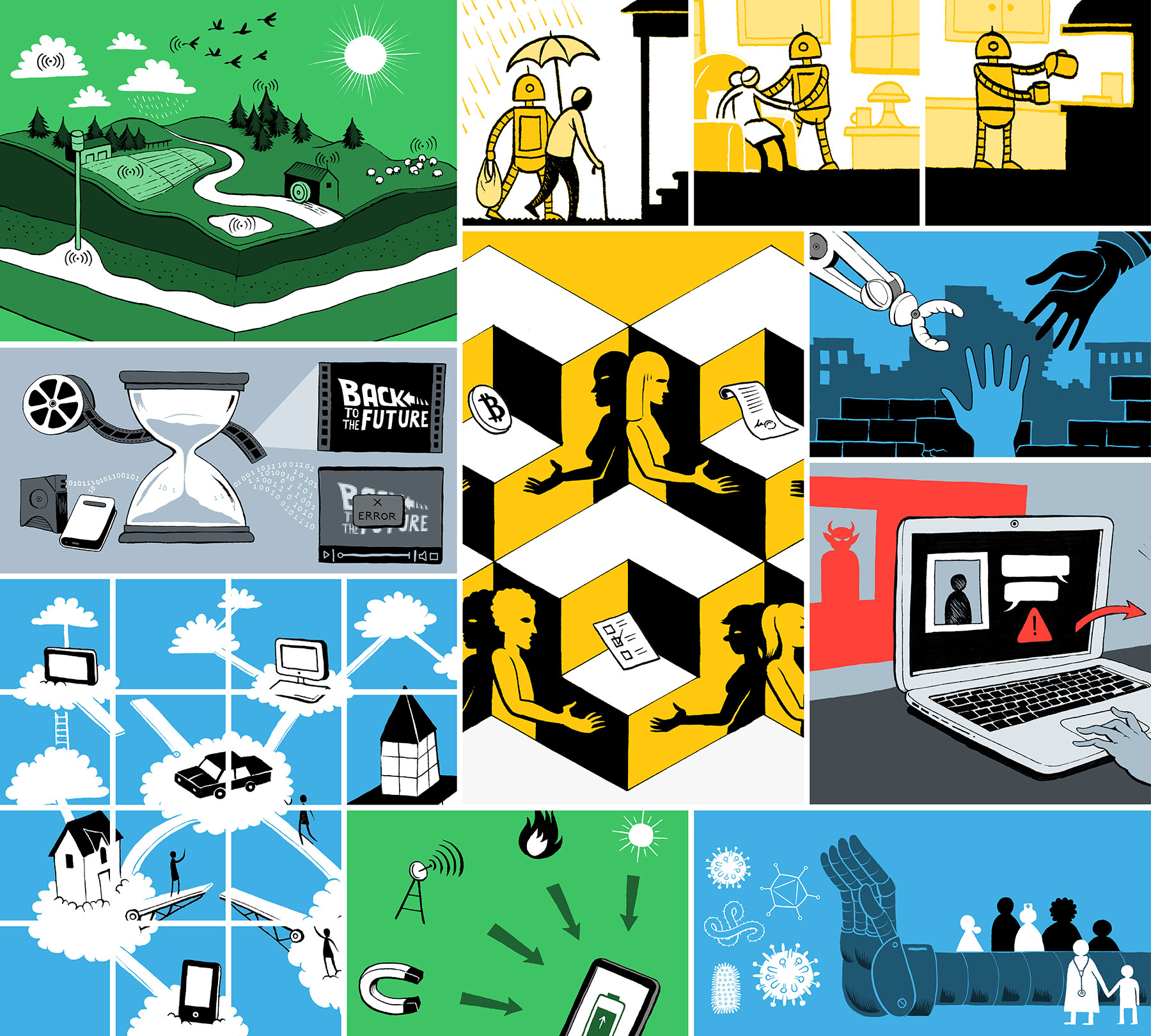Tech Prizesfor Horizon 2020
Designing Tech Challenge Prizes for the European Commission’s Horizon 2020 programme
In 2015, together with Nesta’s Challenge Prize Centre and Scuola Superiore Sant’Anna (SSSUP), we researched and designed a series of 10 tech challenge prizes for the European Commission’s Horizon 2020 programme.
Throughout this year-long project, our role was to support the process of identifying good technical problems that could be incentivised through a challenge prize, design the prizes, and test them with domain experts.
Our Approach
The brief for the project was straightforward – find significant tech problems that can be incentivised through challenge prizes.
Challenge prizes are competitions that identify and publicise a clear problem to be solved. The first person or organisation who can find the first or best solution to the problem receives a reward.
In this case, the European Commission were interested in identifying significant technological problems that were holding back progress and that would benefit from a challenge prize incentive.
To meet this brief, we worked together with Nesta and SSSUP to cross-reference our horizon scanning efforts with a list of criteria we considered suitable for a ‘good tech problem’. This list included considerations like – is the problem well defined, is it real, is there a community of solvers interested in building a solution, and will launching a challenge prize lead to innovative solutions.
Together we created a long-list of potential problems that met these criteria and started prioritising the most ambitious and engaging ones.
The topics considered were very diverse and included improving online security, developing blockchain technologies for social good, designing smart homes for the elderly, developing zero-power technologies, improving access to digital content for the blind, and exploring approximate computing as a way to respond to the increasing demand for computing power.
For each of the shortlisted problems, SSSUP conducted detailed research into the areas, analysed existing solutions and their limitations, and identified opportunities for innovation.
Our role was to take this research, identify and prioritise key aspects, and translate them into challenge prizes.
Throughout this process we made use of a design-led research methodology whereby we created a number of challenge prize prototypes and tested them with key stakeholders — from domain experts, to makers, potential users, academics, entrepreneurs, or industry leaders. These prototypes were a visual representation of what the challenge prize would look like once launched. Following the stakeholder interviews, we iterated on the structure and design of the prototypes accordingly.
This meant identifying the core barrier or barriers that were holding back progress in a specific area, defining an ambitious goal and criteria for potential solutions, and designing a prize that would motivate and engage a diverse community of solvers.
To help reach an agreement on key aspects of the prize design, as well as further refine some of the prize criteria, we supported Nesta with designing and facilitating a number of stakeholder workshops. During these workshops, we shared our interview findings, outlined the decisions we made on different aspects of the prize design, and facilitated conversations with stakeholders to reach an agreement on next steps and remaining details.
Outcome and Reflections
The outcome of this project were 10 challenge prizes designed for the European Commission’s Horizon 2020 framework.
- 12-month project
- 10 challenge prizes designed
- Over 30 tech problems long-listed
- Over 100 experts engaged
- Up to €5 million in prize incentives
Three of these challenges are set to launch in 2017:
- Zero-Power Water Infrastructure Monitoring
(total prize of €2 million) - Online Security — Seamless Personal Authentication
(total prize €4 million) - Tactile Displays for the Visually Impaired
(total prize of €2 million)
Through this year-long project we refined our methodology for identifying good problems. We also learned what to look for in a problem when you have a pre-defined way of incentivising innovation. An example is the fact that some of the problems initially identified were important and real, but launching a challenge prize wouldn’t have solved them. We learned that a problem is ‘good’ only when it’s matched with a complementary incentivisation approach.
On the other hand, the focus on designing challenge prizes allowed us to engage more widely with a broad diversity of stakeholders and understand what kind of resources were needed to support innovation. Through stakeholder engagement we learned what was holding back participation and what could motivate new collaborations. This information became essential to designing prizes that would offer both inspiration and relevant support to those interested in building solutions.



